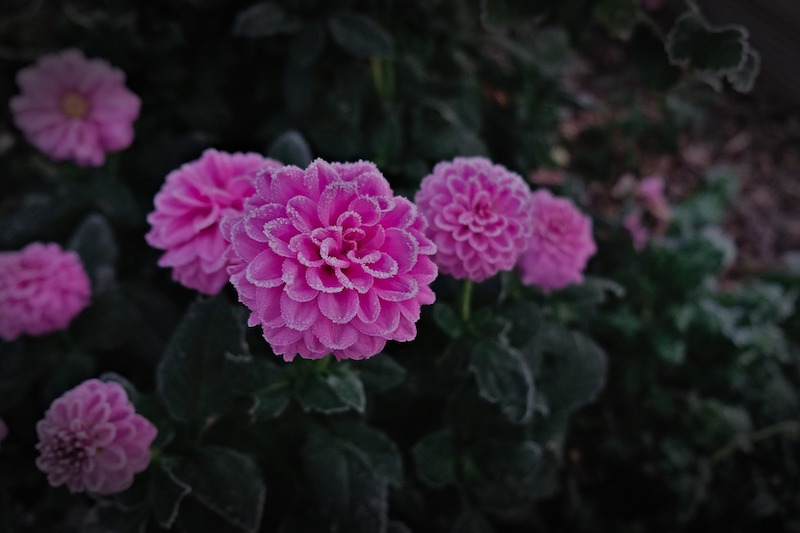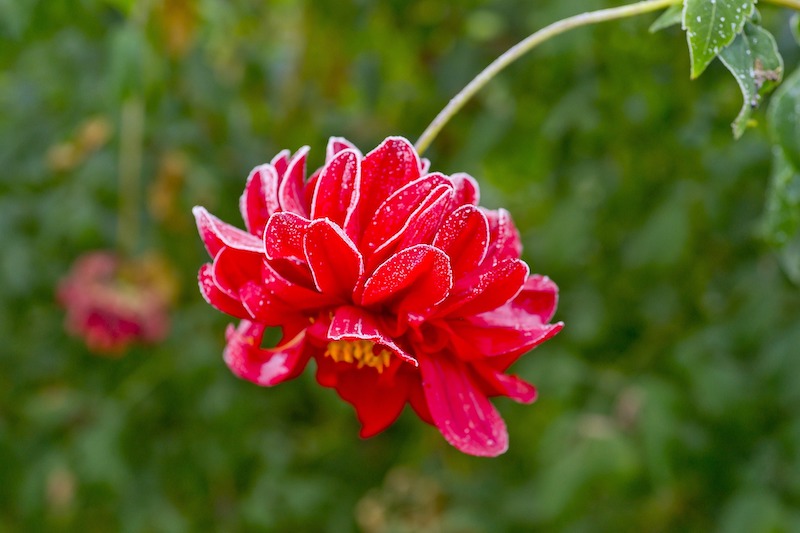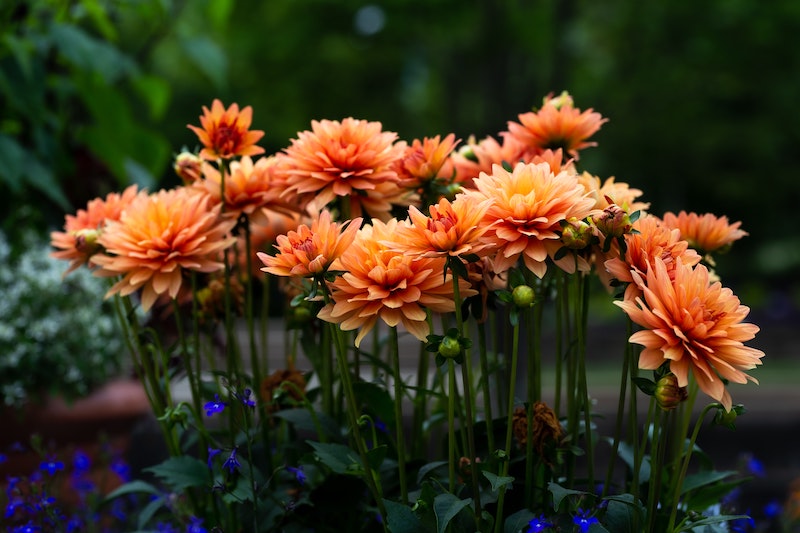Dahlias are a spectacular flowering plant native to Mexico. In their natural habitat, they are perennials and return every year, but in cooler climates they are grown as annuals. For this reason, unless you live in USDA growing zones 8 or 9, you cannot overwinter these plants outside unfortunately. However, you do not have to discard them at the end of summer! There are two options for saving your Dahlias for many seasons to come.

Protecting Dahlias in Winter
If you planted your Dahlias directly in your garden beds, the best option for saving them would be to dig up the tubers. After summer and before the first frost, you should cut back your Dahlia plants completely. At this point, you can dig up the tubers, being careful not to damage them. Discard any unhealthy or rotten tubers as they will only spread disease to the rest of your plants. Clean the soil from them thoroughly with a dry brush, and set the tubers aside somewhere to dry completely. Once dried, you can store the tubers in a cardboard box filled with vermiculite or peat moss and place them somewhere dry and cool for the winter months. This could be somewhere in your garage or the back of a kitchen pantry. They should be ready to plant again in the late spring!

If you live in zone 8 or above, you can leave your Dahlias in the ground. Cut the spent foliage to the ground after the first frost, and cover the planting site with a heap of mulch, an upside-down pot, or even newspaper. Covering the site is particularly important if you live in a climate with wet winters. A cold, wet environment is the perfect recipe for tuber rot, and will quickly lead to your Dahlia’s demise.
Dahlia Winter Care in Pots
Another option for saving your Dahlias is simply growing them indoors during the winter. This is a great option if they were already planted in containers in your garden in the first place. The only limiting factor for Dahlias indoors is sunlight. Dahlias need 6-8 hours of direct sunlight every day. You may achieve this if you have a sunroom, or you could supplement it with grow lights.
You can also cut your potted Dahlia back for the winter, and store the pot in a cool dark place, like a basement or garage. Let the tubers rest without supplemental water or fertilizer. When the temperatures rise in the spring, bring the pot back outdoors, and moisten the soil. The heat and sunlight should stimulate new growth.

Watering Dahlias in Winter
If you choose to grow your Dahlias inside during the winter, you should certainly still water them. You will probably be watering them much less though. Our homes don’t experience the drying heat and light of direct sun, especially in the winter. You still will want to soak your Dahlia completely during watering and wait until the soil is dry to the touch before watering again. The drying time will almost certainly take longer in your home than it did outside under the summer sun.
Growing Dahlias Indoors
Dahlias in their native habitats have no dormancy period; they produce beautiful blooms all season long. In your home, however, they may struggle from the lack of intense sunlight that they prefer. If you begin to notice your plant struggling and you just can’t seem to revive it, the option of cutting it back and saving the tubers is always there!
Steps To Care For Dahlias in Winter
Though Dahlias may struggle to survive indoors during the winter, their tubers can be saved and stored for many seasons to come. There is no right or wrong option when preparing Dahlias for winter, only your preference. With minor preparations you can become a master of Dahlias during all the seasons.
Step 1 - Decide how you would like to overwinter your Dahlias.
Step 2 - If you choose to save the tubers, remember your one crucial enemy–moisture.
Step 3 - If you choose to grow your Dahlias inside, remember to adjust watering and monitor how much light they receive.
Step 4 - If in doubt or despair, just cut them back and store the tubers!
 |
Author Chris Link - Published 01-24-2023 |
